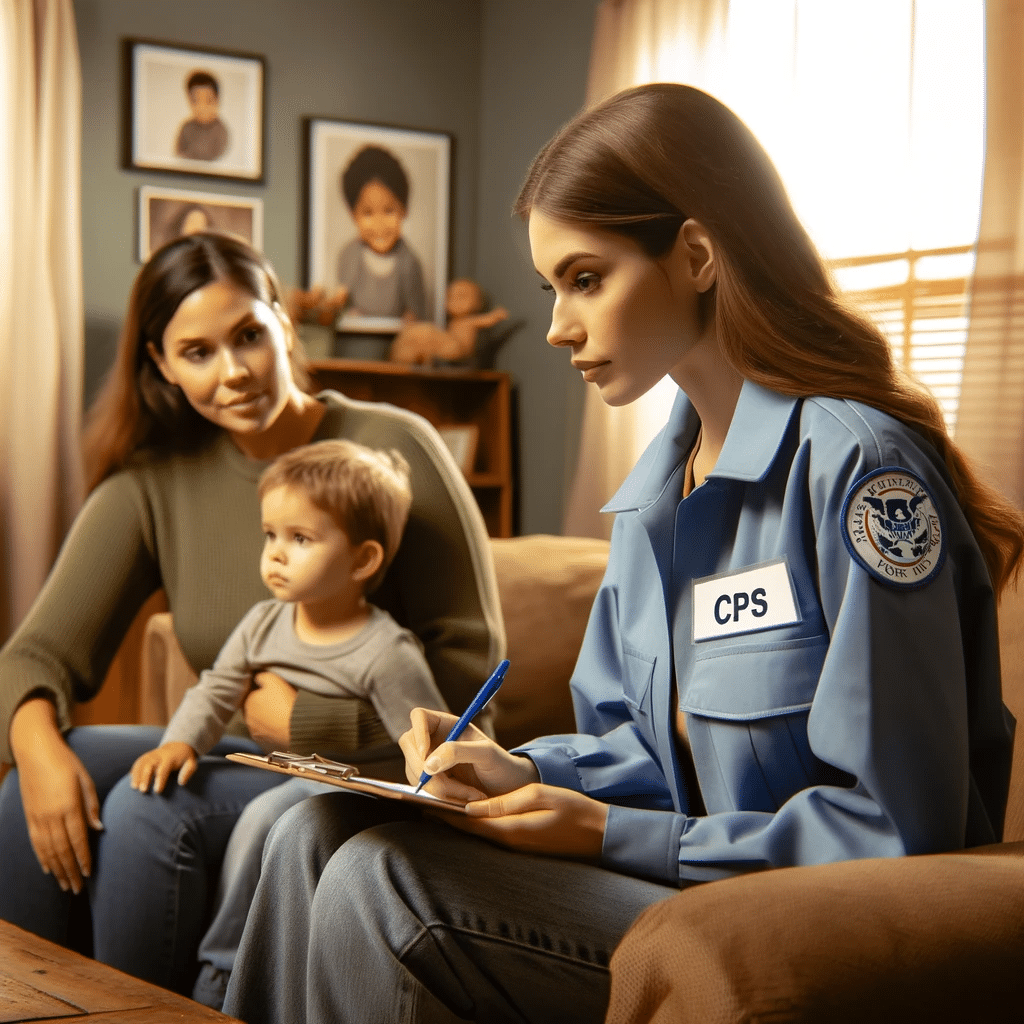
Texas Family Law: Navigating Child Protective Services Cases” – In this insightful article, we shed light on the critical steps involved in a Child Protective Services case in Texas. Understand the legal process, key players, and what families can expect as they seek resolution and safety for their children.
Show Cause Hearing in Texas: Understanding the Process and Your Rights
Legal Representation: Your Key Ally in CPS Cases
In the complex world of Child Protective Services (CPS) cases, having a skilled attorney by your side is crucial. They will serve as your advocate, ensuring your rights are protected and presenting your case effectively. From the moment you step into a show cause hearing, your attorney will be your guiding light, navigating the legal intricacies and fighting for the best possible outcome for you and your family.
Rights of Parents: Empowering Your Voice in the CPS Process
As a parent facing a show cause hearing in Texas, it’s essential to understand your rights. You hold the right to voice your perspective, actively presenting your side of the story. Additionally, you can present evidence supporting your stance and directly challenge any allegations against you. These rights enable your proactive involvement in the CPS process, guaranteeing that your voice is not only heard but also significantly influences the proceedings.
Child Removal Process: Criteria and Emergency Situations
When it comes to determining whether a child should be removed from their home, CPS follows specific criteria. These criteria encompass various factors such as immediate danger to the child’s well-being, abuse, neglect, or other hazardous circumstances. In emergency situations, where a child’s safety is at immediate risk, CPS can take the necessary steps to remove the child without a court order. However, they must promptly seek a court order to legitimize the removal, typically within one working day.
Child Placement Options: Providing Stability and Care
In CPS cases, when a child is removed from their home, different placement options come into play:
|
| |
|
Placement Option |
Description |
|
Foster Care |
Temporary placement of a child with trained and licensed foster parents, ensuring their safety and well-being while their parents address the issues that led to the CPS case. |
|
Relative Placement | Placing the child with a suitable relative who can provide a nurturing and familiar environment. |
|
Family Friends | In certain cases, CPS may consider placing the child with trusted family friends who are willing and capable of providing a safe and loving home. |
|
Reunification with Parents | The ultimate goal in CPS cases is to reunify the child with their parents once the necessary steps have been taken to address the concerns that led to the CPS involvement. |
|
Termination of Parental Rights and Adoption | In severe cases where the safety and well-being of the child cannot be ensured with their biological parents, CPS may pursue termination of parental rights and explore adoption as a permanent placement option. |
|
Kinship Care | Kinship care refers to the placement of a child with a relative or someone who has a significant connection with the child, such as an extended family member or close family friend. |
|
Group Homes or Residential Treatment Centers | In certain circumstances, when the child requires specialized care or treatment due to their unique needs, CPS may consider placing them in a group home or residential treatment center. |
|
Independent Living Programs |
For older youth in CPS cases who are transitioning into adulthood, independent living programs offer support and guidance as they develop the necessary skills for independent living, such as education, employment, and life skills training. |
|
Concurrent Planning | Concurrent planning involves simultaneously working towards reunification with the child’s parents while also developing an alternative permanent plan if reunification is not possible. |
Reunification Services: Working Towards Family Reunification

Reunification services play a vital role in CPS cases, aiming to address the underlying issues that led to the child’s removal and facilitate the safe return of the child to their parents. These services can include counseling, therapy, substance abuse treatment, parenting classes, and other programs designed to support parents in resolving their challenges. By actively engaging in these services, parents demonstrate their commitment to making positive changes and ensuring their child’s well-being.
Termination of Parental Rights: Understanding the Process
In extreme cases, if CPS cannot adequately ensure a child’s safety and well-being, it may seek to terminate parental rights. This process requires a series of legal steps and hearings to permanently sever the parent-child relationship. CPS typically pursues the grave decision of terminating parental rights only after exhausting all other options for ensuring the child’s safety.
Mediation and Alternative Dispute Resolution: Seeking Collaborative Solutions
While courtrooms are common for CPS cases, alternative methods like mediation offer a collaborative approach. Mediation enables those involved in a CPS case to seek agreement outside of court, aided by a neutral mediator. This method encourages open communication, fosters mutual understanding, and explores solutions that best serve the child’s interests.
Role of Child Protective Services: Safeguarding the Well-being of Children
In Texas, Child Protective Services (CPS) is vital in protecting children’s well-being. CPS investigators assess the child’s environment and allegations against caregivers. They diligently collect information, make informed decisions, and recommend actions for the child’s safety and welfare
Impact on the Child: Addressing Emotional and Psychological Well-being
The CPS process can have a significant impact on the emotional and psychological well-being of a child. Being separated from their parents and familiar surroundings can be traumatic and unsettling. It is essential to recognize and address these potential challenges, providing support and resources to help the child cope with the situation. Counseling, therapy, and other specialized services can assist in mitigating the negative effects and promoting the child’s resilience and healing.
Post-Reunification Support: Nurturing Family Stability and Growth
After successful reunification, families may benefit from post-reunification support services. These services can include ongoing counseling, parenting classes, and continued monitoring by CPS. The aim is to provide a supportive environment for the family, assisting them in maintaining stability, acquiring necessary skills, and ensuring the well-being of the child. Post-reunification support can be instrumental in nurturing family growth and preventing future issues from arising.
Final Thoughts

In conclusion, understanding the process and your rights during a show cause hearing in Texas is essential. Competent legal representation and awareness of your parental rights are crucial in the CPS process. Understanding different aspects empowers effective navigation. Engage actively in the process and seek reunification services. Utilize available support to work towards a resolution. This approach prioritizes your child’s well-being and family stability.
Other Related Articles:
- Preparing for Your Child Custody Hearing Texas
- What happens at the first CPS hearing?
- Child Protective Services Final Hearing, Dismissal, Extension, or Monitored Return
- Preparing for a hearing in which a protective order has been requested in Texas
- The day of your temporary orders hearing: What to expect in your Texas family law case
- Divorce in Texas: Don’t believe everything you hear
- 10 Texas Divorce Myths You Might Have Heard From Friends, Neighbors, and Relatives
- How to Set a Contested Final Hearing (Family Law)
- Should you go to your CPS hearing even if you have warrants out for your arrest?
- Is it possible to appeal the results of a temporary orders hearing in Texas?
Frequently Asked Questions
What is a show cause hearing in Texas?
What is a service of show cause order in Texas?
What is a notice to show cause?
What is a show cause hearing in Washington state?
Bryan Fagan, a native of Atascocita, Texas, is a dedicated family law attorney inspired by John Grisham’s “The Pelican Brief.” He is the first lawyer in his family, which includes two adopted brothers. Bryan’s commitment to family is personal and professional; he cared for his grandmother with Alzheimer’s while completing his degree and attended the South Texas College of Law at night.
Married with three children, Bryan’s personal experiences enrich his understanding of family dynamics, which is central to his legal practice. He specializes in family law, offering innovative and efficient legal services. A certified member of the College of the State Bar of Texas, Bryan is part of an elite group of legal professionals committed to ongoing education and high-level expertise.
His legal practice covers divorce, custody disputes, property disputes, adoption, paternity, and mediation. Bryan is also experienced in drafting marital property agreements. He leads a team dedicated to complex family law cases and protecting families from false CPS allegations.
Based in Houston, Bryan is active in the Houston Family Law Sector of the Houston Bar Association and various family law groups in Texas. His deep understanding of family values and his professional dedication make him a compassionate advocate for families navigating Texas family law.




